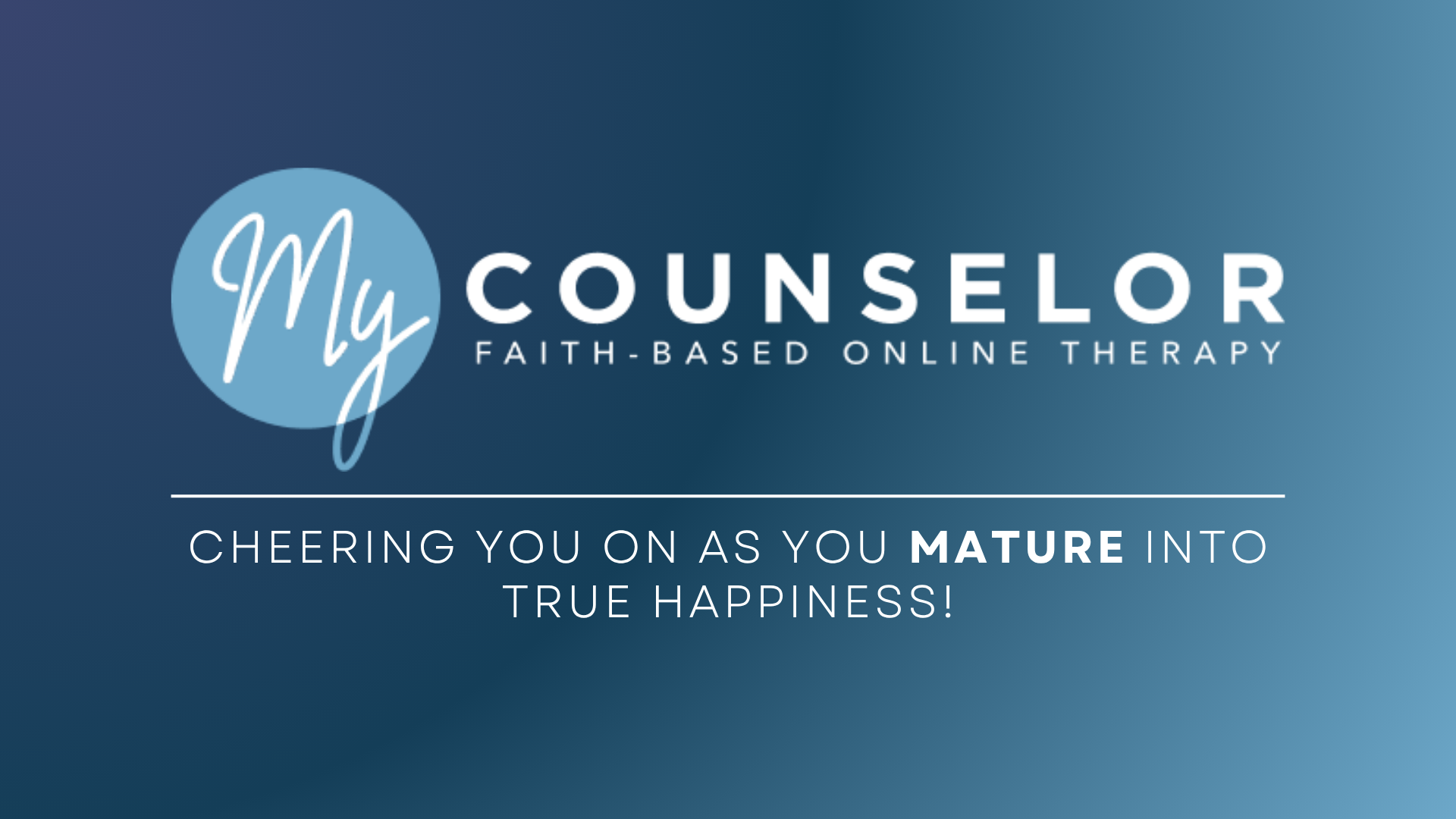Anxiety: Understanding Its Biology
This article is based on scientific evidence and clinical experience, written by a licensed professional and fact-checked by experts.
Posted: May 22, 2022
Estimated reading time: 8 minutes
In This article

Do you know what it feels like when you have anxiety? Probably so. But do you know why you feel anxiety symptoms or what to do to help your anxiousness? In this article, you’ll learn the biology of anxiety as well as tips for managing anxiety and stress – So you can calm down and get rid of anxiety for GOOD!
We’ve all felt it- racing heart, racing thoughts, sweaty hands, knots in the stomach, tense muscles in the neck, back, and jaw. Anxiety. We know what it feels like, but what is it and why do we experience it?
Anxiety is a Good Thing
You might be surprised to learn that anxiety is a good thing. God designed our body to use an anxiety response to help us stay safe and be productive.
When we’re on a hike and a bear jumps out of the woods, our anxiety response prepares our body for survival. When our alarm goes off and we really don’t feel like getting out of bed our anxiety helps us. The angst that comes from the thought of losing our job and not being able to pay our bills motivates us to get out of bed. When the Holy Spirit brings conviction, He utilizes the anxiety pathway in our body to get our attention.
Anxiety is our friend, not our enemy. Without it we would be a mess.
But sometimes a good thing turns bad.
What God intended to be a friend to us can become a real enemy. When we are fearful of things we need not be or to an unhealthy degree, our anxiety begins to create some real problems for us.
Path to Anxiety
I find it helpful to have a basic understanding of the mechanics behind the anxiety we feel. Knowing how it works gives us the ability to influence what we can for the better. So, let’s walk through the neurophysiology of anxiety together.
There is a complicated explanation from neuroscience that looks like this… A Diagram of Anxiety.
But I prefer simple explanations, so we’re going to use this visual Path to Anxiety
FACTS
Facts aren’t opinions, they’re data. We bring data about the world outside our body into our brain by way of our five senses. At this stage in the process the data is just information, it doesn’t really have any meaning to us. Imagine I’m speaking mandarin to you. Now assuming you don’t speak Chinese, it’s going to sound like squirrel gibberish. It has meaning, but not to you. For you it’s just noise brought into your brain from your ears.
So it is with all the images, smells, tastes, sounds, touch sensations you take in. It’s not until the next stage in the neurological journey that this data takes on meaning.
STORY
The story phase is the meaning-making part of our brain’s process. Our brain applies all that we have learned from our past experiences in life to make its best guess at the meaning of the data.
- What does the data mean?
- Why did it happen?
- What were the intentions of the people involved?
- Does it create danger (physical or emotional, tangible or intangible) for me or those I care about?
Our life experience influences greatly our interpretations of the data we experience. That’s why 30 people can observe an incident and walk away with very different ideas about what happened and why.
For any given set of data there are an infinite number of stories that could be told. Your brain identifies the one that seems most likely to you based on your experience and runs with it.
Every moment of your life your senses are taking in a constant stream of data. No matter where you are or what you are doing your ears are picking up all sorts of sounds, all the skin on your body is feeling various levels of pressure and temperature. You are smelling, tasting, and if your eyes are open you are seeing what’s in focus and peripheral images.
Ninety-nine (99%) of the data your brain analyzes, determines if it’s important or not, and discards or responds subconsciously to it. It does this through a very fast, but not so smart, process. Which is helpful. Imagine if you had to consciously think about every piece of data. All day, every day would be spent just sorting and labeling. If even for a few minutes you were aware of all the data coming in, you would be completely overwhelmed.
Your brain, by God’s incredible design, handles most of the information for you and only brings to your conscious awareness the things it thinks you need to focus on. This information gets relayed to your prefrontal cortex for your conscious consideration.
Most of the stories you tell, you are completely unaware of. Your brain does it in the background while you are focused on other things.
While you don’t notice the story, you do tend to notice the feelings created by the stories. Particularly if those feelings are intense and negative.
FEELINGS
Emotions are very mechanical. We don’t tend to think of feelings as being mechanical. At least I didn’t before studying the neuroendocrinology of them. I always thought of them as these ethereal floaty things that seemed to come and go with no real rhyme, reason, or logic to them.
They’re not though. There’s no happy pollen in the air, that makes us happy when we breathe it in. Nor is there a sad lotion that absorbs through our skin making us sad. And, contrary to popular belief, my wife does not have a blow-gun with angry juice she shoots me in the neck with, making me upset.
In reality, feelings follow a very straightforward and logical path. They are the product of ourglands and nerves. Glands (endocrine system) do not think or make decisions on their own. They just do what they are told. And who’s calling the shots? Well, you are. That is, the meaning-making part of your brain is when it tells a story.
Now you may not remember telling yourself to feel anxious when you saw the flashing blue lights behind your vehicle on your way to church. You did though. Your subconscious, that part of your brain that’s filtering all the incoming data, made the call for you.
It said, very quickly, “Oh, this isn’t good. In fact, it’s very very bad. Something terrible is about to happen.” So it picked up the phone and dialed the adrenal glands. Those two bean-shaped blobs of tissue setting on either side of your spine by your kidneys. And the Story part of your brain said, “Adrenals, we got a situation, and it’s terrible. We’re going to need a #terrible dose of stress hormones (adrenaline, cortisol, norepinephrine) in the blood stat!”
Micro-seconds later your heart and thoughts are racing. Hands are starting to sweat, knots forming in the stomach, muscles tensing in the neck, back, and jaw. You’re really feeling that anxiety now.
ACTION
We tend to react out of our emotions. When something doesn’t feel good, i.e. we feel angry, sad, hurt, afraid, we do things to try to feel better. We utilize coping mechanisms in an attempt to soothe our self. Sometimes these coping mechanisms are helpful (we pray, we turn to a friend and process out loud, journal, or go for a run, etc.). Sometimes they’re not (we protest by yelling, screaming, defensively arguing, shutting-down, stonewalling, bite our nails, binge eat or drink, look at porn, etc.).
It is incredibly helpful to develop healthy coping mechanisms for navigating negative emotional experiences. It sure beats beating your head against the wall or self-sabotaging with unhealthy ones. But, you can also level up and learn how to change the emotions altogether. The two together can enable the self-control that makes you master of your emotions.
What should we do about anxiety?
The key to mastering anxiety is twofold. First, you need to learn healthy coping mechanisms that help you manage your reactions to anxiety-producing situations. Next, you learn how to trace your path to anxiety backward to identify the story that’s driving the anxiety.
When you bring the unconscious story into conscious awareness it gives you the ability to change the story. Change the story, change the emotional response (i.e. turn off, or at least down, the anxiety response).
If you can both turn down the anxiety response and manage it better with healthy coping mechanisms, then you are in good shape my friend.
Strategies for Managing Anxiety
There are a number of strategies counselors teach clients to help them manage anxiety better. Here are just a few:
1. STEP BACK & BREATHE
Retreating and regrouping is a good way to collect yourself before re-engaging. If possible, remove yourself from a situation for a moment (3-20 minutes) to give yourself space to settle for a moment. BREATH. The lungs are unique.
While all other physiological reactions of an anxiety response are completely automatic, the lungs can be automatic or manual. By flipping the switch to manual and slowing down your breathing, with deep breaths, it sends a signal to the rest of the body it doesn’t need to be on high alert.
You need space away from the “noise” of a situation to hear yourself think, so you can start asking questions.
2. ASK QUESTIONS
It’s our pre-frontal cortex that enables us to ask reflective questions. It’s also our pre-frontal cortex that is the smarter part of our brain that we want to bring un-conscious stories into conscious awareness with.
We do this by asking our self questions. In order to ask our self questions and answer them our frontal cortex has to get active and involved. Try these:
- Holy Spirit, help me identify what’s going on in my heart.
- What am I feeling?
- What are the facts? What did I see or hear immediately prior to feeling what I’m feeling?
- What might the story be that connects the facts to my feelings? What meaning did I take away?
3. QUESTION YOUR STORY
As we said before, there are an infinite number of Stories that could be told for any set of Facts.The fast, dumb part of our brain chooses the one that makes the most sense to us based on our past experiences. It then proceeds to send the messages for emotional responses consistent with that story.
If, however, there is more than one story under consideration – the brain is in a hold pattern waiting to generate an emotional response until a story is decided upon. So, if we introduce another possible story, with a different emotional significance, into the mix we effectively interrupt the emotional reaction. Here are some helpful questions:
- However remote, is it POSSIBLE there are other explanations for this situation? What are they?
- Hypothetically speaking, why might a reasonable, rationale, and decent human being respond the way this person is?
Even if the first conclusion we jumped to is absolutely right, this exercise helps us. It gets our frontal cortex involved in a way that helps us make better decisions about how to respond to a situation.
4. DECATASTROPHIZE
Watching your family be murdered in front of you before having your eyes gouged out. Now that’s a catastrophe. One hopefully none of us ever have to face. Dropping your phone in the toilet…not a catastrophe.
The labels we place on situations in our story matter. They tell our glands what kind and how intense of an emotional reaction to create. Change the label, change the emotional response.
All emotion, at its highest level of description, either feels “Good” or “Bad”. There are lots of different nuances to good and bad. There are also varying intensities. Think about it like a scale, with the best thing you can possibly imagine at one end, and the worst at the other. With lots of tick marks in-between.
The further to the right of the scale you #label a situation, the more intense negative feeling you will experience. The further to the left, the less bad. You get to decide. You can either let your sub-conscious slap a label on it, that may or may not be helpful, or you can intervene and choose a label.
When I talk about decatastrophizing a situation, I mean identifying the intense label we have applied to a situation and choosing to replace it with a less intense label.
We don’t just want to choose a less intense label, but one that is more truthful. For example, perhaps I’m terrified of dying in a car accident. Many find death a terrible and terrifying thing. But, as a believer, I know to be absent from the body is to be present with the Lord. For me death has no sting.
So death, really isn’t all that terrible. In fact, it’s actually a good thing for me. Sad for those left behind, but God will look after them in my absence, just as he did in my presence. Granted my wife will be inconsolable for the better part of a day, but then…
So in truth, for me, death is not terrible or catastrophic. To label it as such isn’t only not helpful, it’s also not true. I want to practice telling myself the truth. When I change the label, my emotions will follow.
I call this particular strategy, decatstrophizing the worst-case scenario. Trying to convince myself the “terrible” thing won’t happen has only limited effectiveness. Because, in this case, dying in a car accident could happen! If my peace is based on convincing myself it can’t, I’m not living in reality. That’s denial and avoidance.
The better approach is to go with the feared outcome. Ok, so what if the thing I fear does happen? Is it really that terrible? Is a better label more fitting? Even if the situation is unlikely, I can still say “Even if it does happen, it won’t be that bad.”
5. TELL YOURSELF THE TRUTH
Very often our labeling of situations is not consistent with the Truth of God’s word. Learning to identify the misbeliefs in our heart about feared situations and replace them with the truth of God’s word is powerful. The Holy Spirit will help you, if you ask Him to, identify the misbeliefs that are keeping you from having peace.
Back to topThis article is based on scientific evidence and clinical experience, written by a licensed professional and fact-checked by experts.
About the Author

Josh Spurlock
Josh Spurlock MA, LPC, CST, has a BA in Biblical Languages and a Masters in Counseling. He is a Licensed Professional Counselor (LPC), holding licenses in Missouri, Colorado, and Florida. He is also a Certified Sex Therapist (CST), Level 2 AEDP Therapist, and an Ordained Minister. He is an Advanced Practice Clinician, with over 10,000 hours of clinical experience. He specializes in Marriage Counseling, Sex Therapy, Family Counseling, and works with Executives, Pastors, Business Owners, and Ministry Leaders. Learn more about Josh Spurlock at JoshSpurlock.com.
Learn More About JoshIn This article
References
- Stanley, R. (2002). Anxiety and its Disorders—The Nature and Treatment of Anxiety and Panic David H. Barlow (Editor), The Guilford Press, New York, 2002. No. of pages: 704 pp., ISBN 1‐57230‐430‐8. Stress and Health: Journal of the International Society for the Investigation of Stress, 18(4), 193-194. [1]
- Hofmann, S. G., & Smits, J. A. (2008). Cognitive-behavioral therapy for adult anxiety disorders: a meta-analysis of randomized placebo-controlled trials. The Journal of clinical psychiatry, 69(4), 621. [2]
- Roemer, L., & Orsillo, S. M. (2002). Expanding our conceptualization of and treatment for generalized anxiety disorder: Integrating mindfulness/acceptance‐based approaches with existing cognitive‐behavioral models. Clinical Psychology: Science and Practice, 9(1), 54-68. [3]
Share this article
View more articles

Navigating Conflict and Reconciliation with Adult Children: Practical Tips for Parents
By: Danielle Schaefer







